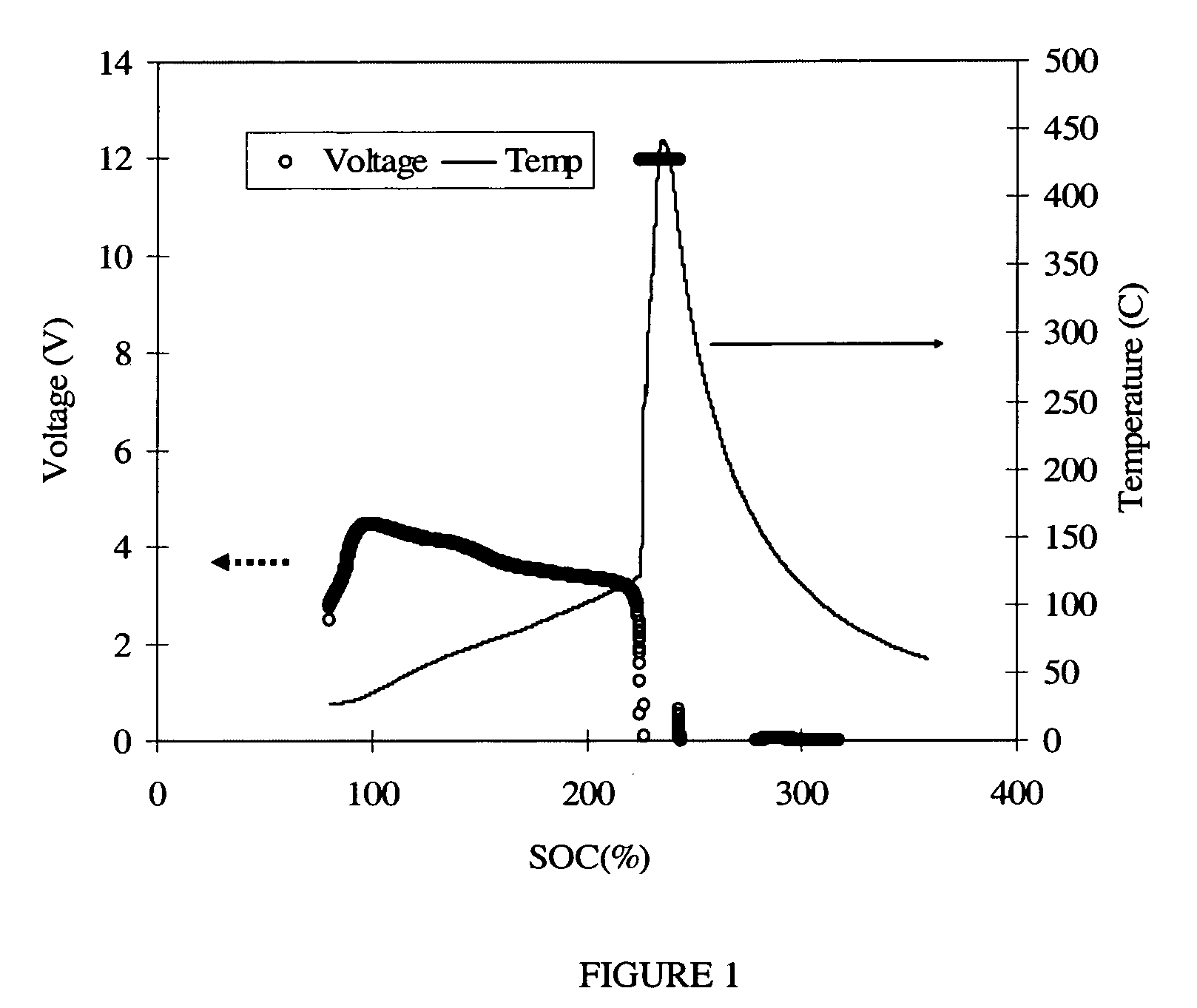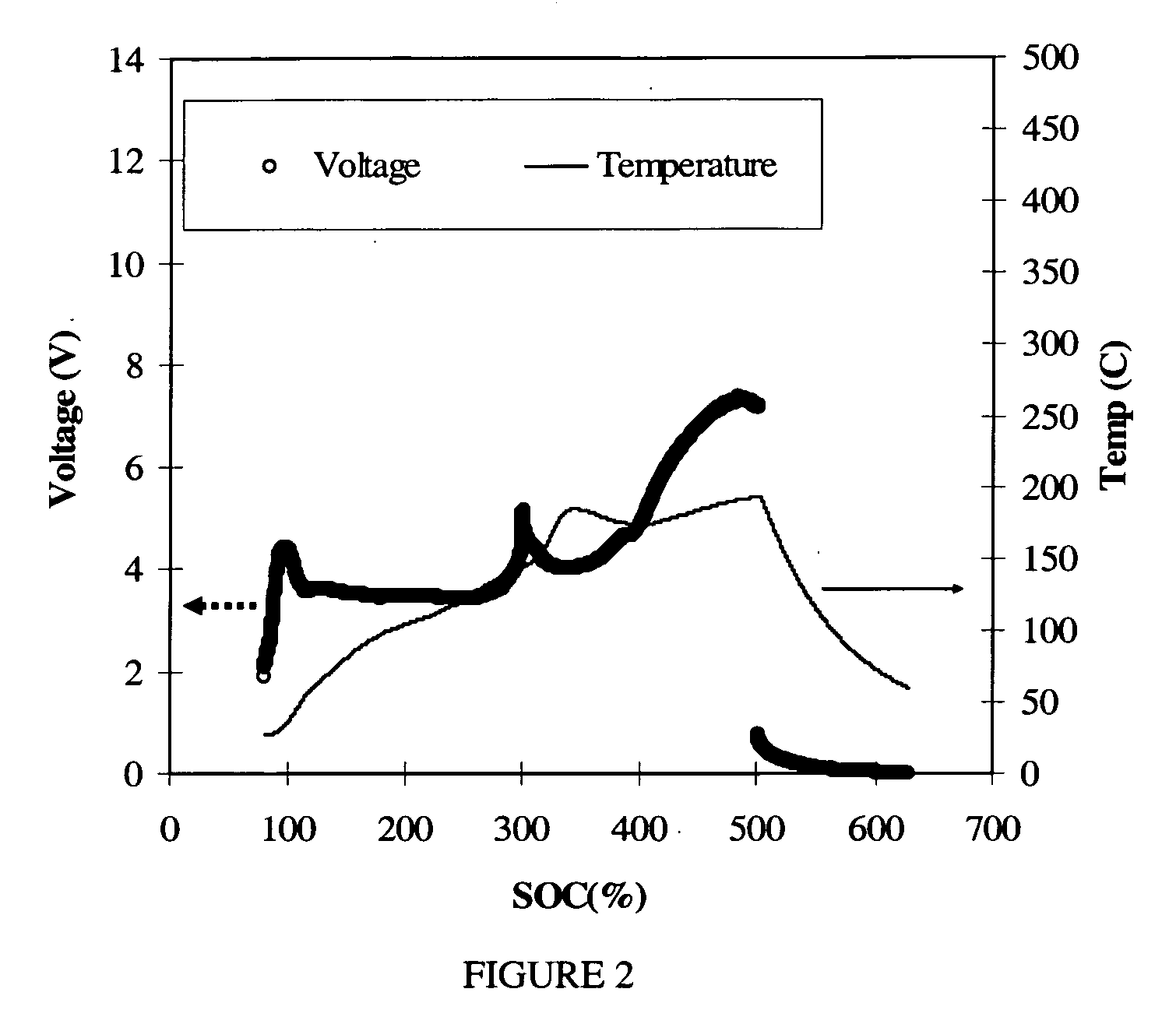Battery with molten salt electrolyte and phosphorus-containing cathode
a battery and electrolyte technology, applied in the field of batteries, can solve the problems of high vapor pressure, flammability, and high cost of conventional organic electrolyte, and achieve the effects of cost and thermal stability problems, and the use of conventional cathode electroactive materials in li-ion batteries,
- Summary
- Abstract
- Description
- Claims
- Application Information
AI Technical Summary
Benefits of technology
Problems solved by technology
Method used
Image
Examples
examples
[0038]FIG. 1 shows an overcharge test result for a lithium-ion battery having a LiNiO2 type cathode, an Li4Ti5O12 anode, and an EMI-TFSI (1-ethyl-3-methylimidazolium-bis(trifluoromethylsulfonyl)imide) molten salt electrolyte containing a lithium ion source (Li-TFSI) at a concentration of 1.25 mol / l electrolyte. The total current was 5 C. Smoke and fire was observed during this overcharge test. In the figure, SOC is state of charge.
[0039]FIG. 2 shows an overcharge test result for a lithium-ion battery having a LiFePO4 cathode, a Li4Ti5O12 anode, and an EMI-TFSI Li-TFSI 1.25 mol / l electrolyte. The current was 5C. No smoke or fire was observed, in contrast to the battery with the LiNiO2 cathode, indicating that the lithium iron phosphate cathode had greater thermal stability.
[0040]FIG. 3 shows a DSC test result for two batteries, one having the same cathode used to obtain the data of FIG. 1, the other with the LiFePO4 cathode used to obtain the data of FIG. 2, other details as being ...
PUM
| Property | Measurement | Unit |
|---|---|---|
| mean diameter | aaaaa | aaaaa |
| mean diameter | aaaaa | aaaaa |
| vapor pressures | aaaaa | aaaaa |
Abstract
Description
Claims
Application Information
 Login to View More
Login to View More - R&D
- Intellectual Property
- Life Sciences
- Materials
- Tech Scout
- Unparalleled Data Quality
- Higher Quality Content
- 60% Fewer Hallucinations
Browse by: Latest US Patents, China's latest patents, Technical Efficacy Thesaurus, Application Domain, Technology Topic, Popular Technical Reports.
© 2025 PatSnap. All rights reserved.Legal|Privacy policy|Modern Slavery Act Transparency Statement|Sitemap|About US| Contact US: help@patsnap.com



